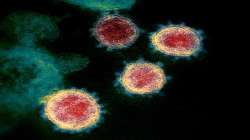Faster spread of some coronavirus variants could be due to sturdier protein, say scientists
The spike protein of the novel coronavirus, which enables it to infect human cells, is more stable in faster spreading versions of the virus, such as the ones first reported in the UK and South Africa, compared to the original form of the pathogen from Wuhan, China, says a new study.

The spike protein of the novel coronavirus, which enables it to infect human cells, is more stable in faster spreading versions of the virus, such as the ones first reported in the UK and South Africa, compared to the original form of the pathogen from Wuhan, China, says a new study. Researchers, including those from the Boston Children's Hospital in the US assessed the structure of the coronavirus spike protein down to the atomic level, and found how it changed with the D614G mutation which is carried by the Brazil, South Africa and UK variants of the SARS-CoV-2 virus.
The results, published in the journal Science, showed that the mutation makes the spike more stable as compared with the original SARS-CoV-2 virus from Wuhan, enabling the variants to spread more quickly.
According to the scientists, the spike proteins in the original virus would bind to the ACE2 receptor on human cells, and then dramatically change shape, folding in on themselves and enabling the virus to fuse its membrane with host cells.
However, they said the spikes would sometimes prematurely change shape and fall apart before the virus could bind to cells.
While this slowed the virus down, the researchers said this shape change also made it harder for the human immune system to contain the virus.
"Because the original spike protein would dissociate, it was not good enough to induce a strong neutralizing antibody response," said study co-author Bing Chen from the Boston Children's Hospital.
In the variant forms, the scientists said the mutation stabilises the spike by blocking the premature shape change and making the spikes bind more weakly to the ACE2 receptor.
According to the researchers, since these spikes are less apt to fall apart prematurely, the virus overall is rendered more infectious.
"Say the original virus has 100 spikes. Because of the shape instability, you may have just 50 percent of them functional. In the G614 variants, you may have 90 percent that are functional, so even though they don't bind as well, the chances are greater that you will have infection," Chen explained.
Based on the findings, the scientists suggested that redesigned vaccines incorporate the code for this mutant spike protein.
They believe more stable spike shapes could make vaccines based on these virus proteins more likely to elicit protective neutralising antibodies.